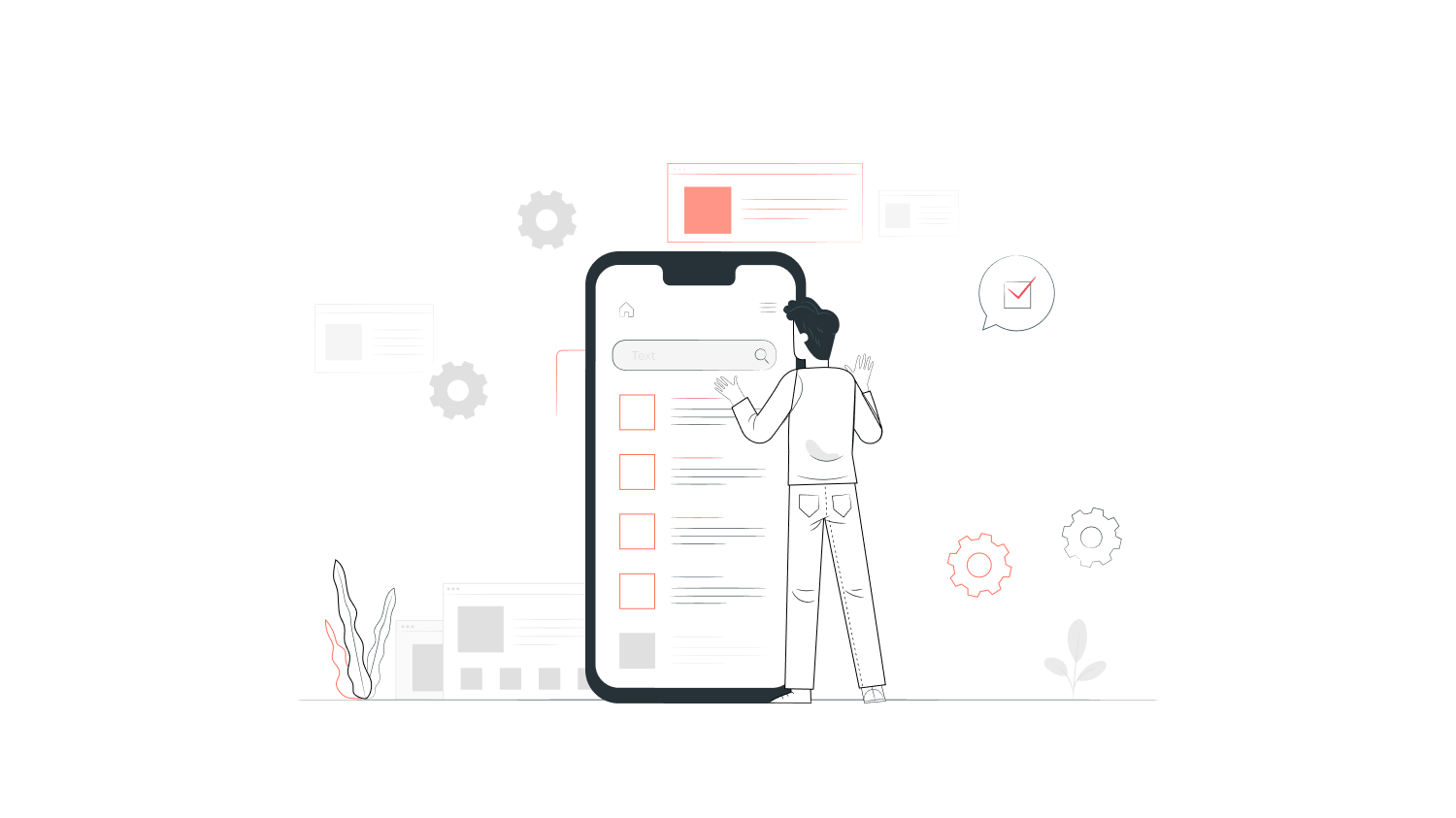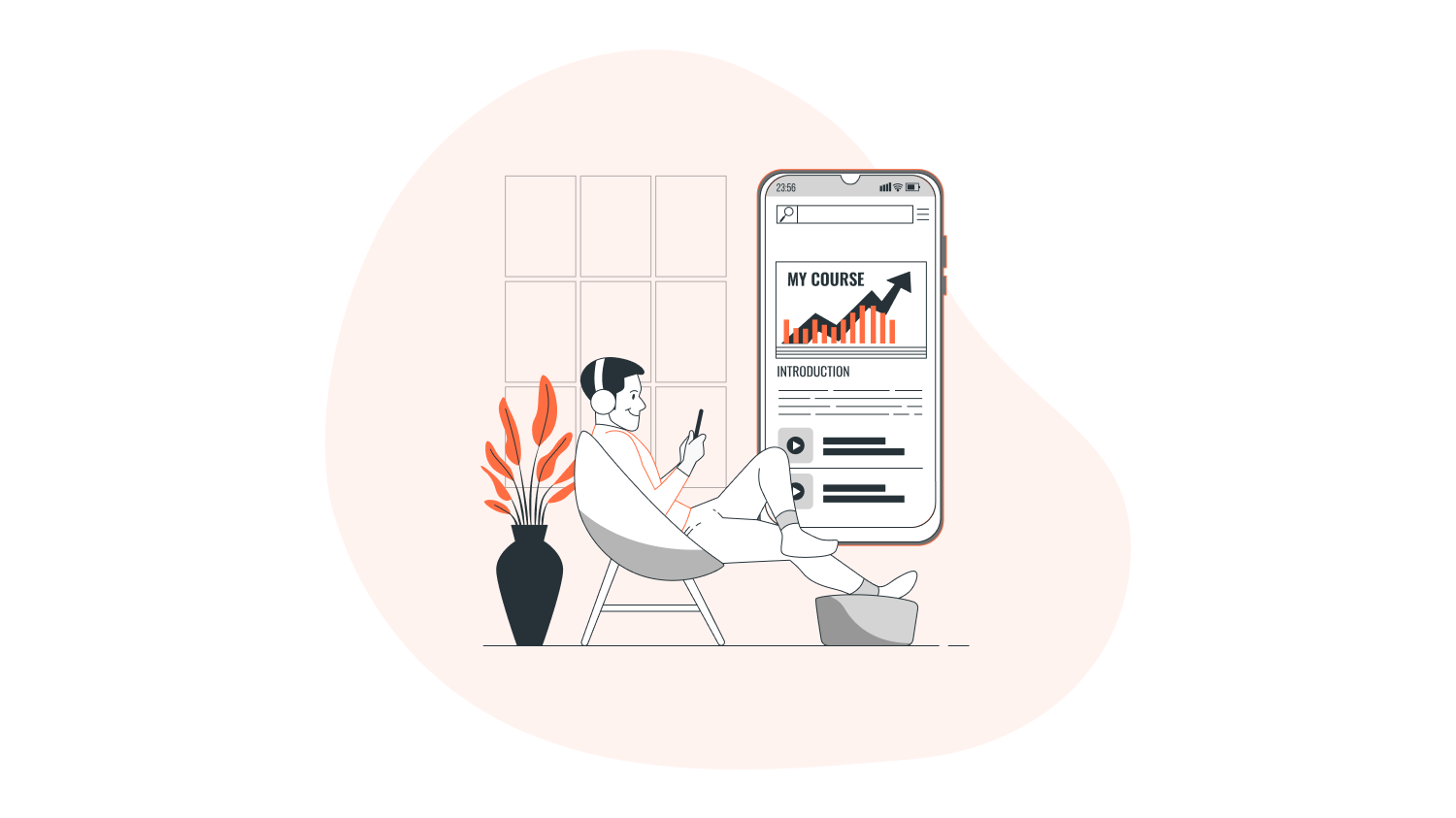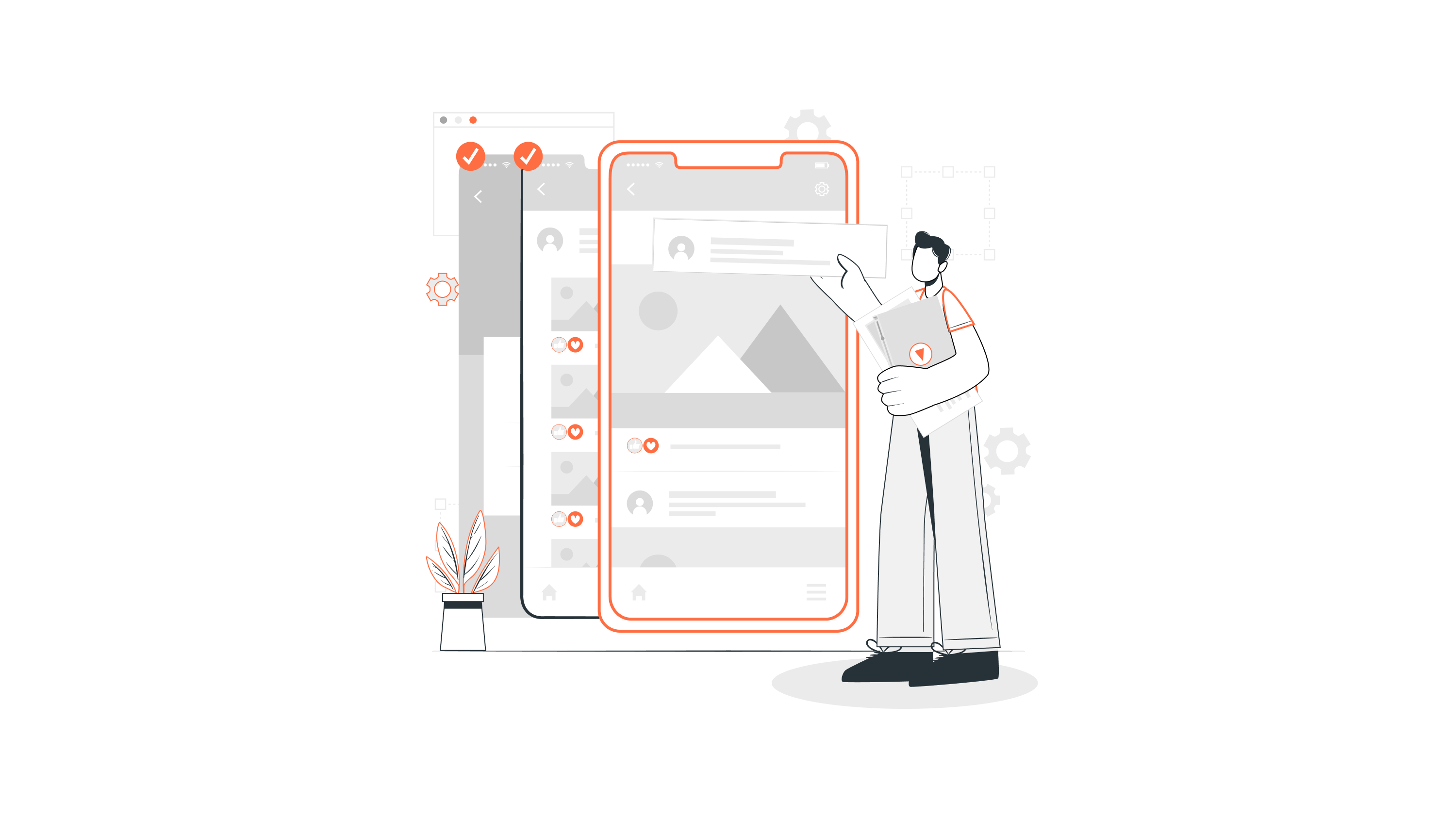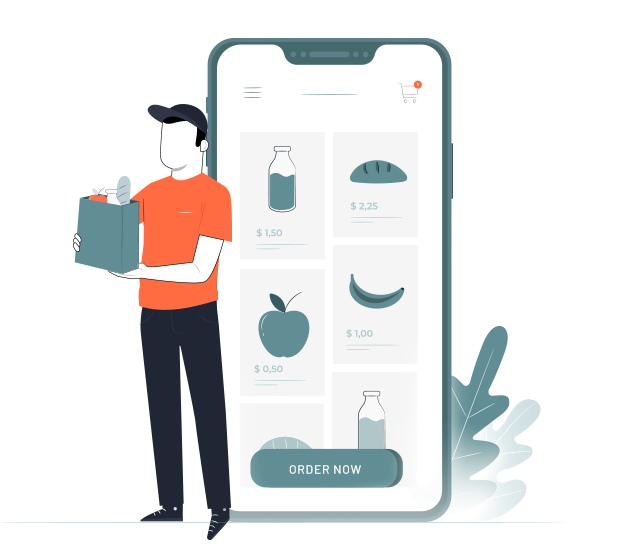Ever made a paper crane?
We all know that in origami we follow certain rules and patterns to unfold a beautiful crane out of paper.
Similar way, there are rules, patterns, and procedures followed to develop mobile apps into their optimal forms.
The amount of focus put into the development of mobile app architecture improves an app’s productivity, scalability, user-friendliness, and other aspects.
Let’s take a closer look at the architecture of mobile apps.
Key takeaways
- Presentation, business layer and data are the three layers that constitute the most common representation of mobile app design.
- Improved app architecture creates distinctive and scalable apps.
- Poor performance, expensive maintenance costs, testing difficulty, fallibility are all consequences of an unstructured app architecture.
What is mobile application architecture
Mobile app architecture is a system of rules and procedures that developers use as a guide for creating the perfect mobile app.
This development process includes planning the type of app, compatibility with certain devices, functionalities and so on.
What defines a good mobile app architecture?
There are plenty of applications, but many of them don’t follow the structure while they are developed.
Lack of adherence to app architecture causes issues including expensive costs, challenging maintenance, scaling up, complexity in testing, and more prone to mistakes.
The best mobile application architecture upholds sound software development and saves time and money even during upgrades. A sound architecture will be applicable to both native and cross-platform options.
How many layers are there in a mobile app’s architecture
Mobile app architecture comes in three layers. They define and determine the error-free flow of Mobile application architecture.
- Presentation layer
Everything required to present the app to the user is covered in the presentation layer.
When building the presentation layer, developers focus on the design that visually appeals to the user when using the app.
The key elements of the presentation layer are user interface (UI) and user experience (UX).
- The user interface (UI) emphasizes design components such as colour schemes, fonts, image positioning, and overall layout.
- Customer experience, or the in-depth understanding of what the user wants and feels about the product, is what user experience (UX) is all about.
For users to access the presentation’s consistency and standard, developers must pick the appropriate platform and device.
- Business layer
The main focus of this layer is the logic and rules responsible for data interchange, operations, and workflow control.
Security, data saving, sign-in, data validation, and exception management are all handled by this layer.
Depending on how the programme is used and how many resources each operation needs, these processes may run on a server or a user device.
- Data layer
Data utilities, service agents, and data access are elements of the data layer that are used in mobile app development to handle data transactions.
This layer addresses two components in mobile app development:
- Persistence, where data sources are accessed through APIs.
- Network, where routing, error reporting, and network communication are managed.
Validation and data maintenance must be taken into consideration while designing the data layer.
Mobile application development architectures
Although the same principles of mobile app architecture diagram can be used in mobile app development, Android and iOS each require different features.
Android apps use open-source software whereas iOS uses Apple libraries.
Android mobile app architecture
Google, Samsung, Sony, and Nokia are just a few of the manufacturers whose devices use Android apps to support their respective native languages.
There is no single architecture that is suggested for Android, yet Clean Architecture is most often used.
3 layer structures are the main focus of clean architecture. In a clean design, the domain/business layer must use interfaces rather than rely on the other layers.
It is difficult to understand though it helps in scaling up the application.
iOS mobile app architecture
Apple provides best practices for app architecture with the MVC concept, and native iOS apps are developed using the Objective-C and Swift languages (Model-View-Controller).
- Model – The data layer involves tenacity, model objects, parser components, managers, networking code.
- View – A reusable tier that represents the app to the user, similar to the presentation layer.
- Controller – A level acting as a mediator and employing a protocol to communicate to an abstraction.
Hybrid mobile architecture
Hybrid mobile apps are among the quickest to develop across a number of platforms. Both native and online solutions are used in hybrid mobile apps. They are easy to update, and are not suitable for complex applications.
Hybrid apps use native apps for the back-end and for the front end, it uses platform-neutral JavaScript, HTML and CSS.
Suggested read:How to Choose the Best—Native vs Hybrid App
Cross-platform app architecture
Cross-platform does not rely on web languages, instead it depends on frameworks such as React Native, Flutter and Xamarin.
This platform delivers an attractive approach by providing a user experience similar to that of native applications.
Basic elements to consider while designing a mobile app architecture
Portability- The system’s ability to respond to a shifting environment is what defines it.
Mobile apps are open to far more frequent environmental changes, including those in the market and in technology.
A strong design ensures that the system is flexible and can react to changes while limiting their impacts.
Maintainability- In order to fix errors, boost performance, and other challenges, it is important to take note of requirement changes brought on by environmental changes. Such a situation necessitates ongoing app maintenance.
A strong mobile design and programming must ensure excellent maintainability while lowering the effort required to keep the system up and operating.
Reusability- A good architecture understands the importance of reusing components and interfaces while modifying or rebuilding an application.
Both the architecture and the design must support reuse in the structured app development cycle for it to be effective.
Security- One of the most crucial components of an application is data security. To safeguard the data saved in the app, the architecture must be strong enough.
It must function well with the environment. Additionally, all of the data kept on the device needs to be securely encrypted.
Performance- The application must deliver reasonable performance and error-free access. If loading takes too long, the user might get distracted and decide to exit the application.
The perfect software must be able to quickly and efficiently reach every audience.
How to design app architecture
Here are some fundamental factors to think about before taking a big leap into developing a mobile app:
- Device
Prior to developing a mobile app, decide on the platform, such as Android, iOS, iPadOS, Windows, or cross-platform.
Determine the basic OS version that your app requirement can support and make sure the hardware resources required can be met by a decent amount of devices available in the market.
This phase aids in creating apps that work effectively across a variety of devices for users.
- Developmental framework
Focusing on the framework for development is also a crucial phase in the mobile architecture design process.
The frameworks provide basic templates and components for developing web applications. It applies for both frontend and backend.
Front end frameworks: React native, Flutter, Xamarin and IONIC are popular cross platform frameworks.
Suggested read: How to Choose a Mobile App Development Framework in 2022: A Beginner’s Guide
- Bandwidth
The network connectivity could be unstable. This scenario must be taken into account in order to develop a solution.
Consider this connectivity issue while choosing hardware and software tools to ensure network connectivity.
When creating your data access techniques, state management, and caching, consider intermittent connectivity into account.
- UI and UX design
A simple and strong user interface can take your mobile app to the next level as it draws the attention of the customers.
Better user experience (UX) design is essential for online success, but mobile UX is challenging due to the changing user expectations and best practices of each operating system and device type.
UI and UX must be balanced in the design of the mobile application architecture.
Suggested read: The Crucial Role of Artificial Intelligence in UX Design
- Navigation
Though this component comes under the design section, it requires knowledge of both front end and back end.
There are different ways to search for the app feature. Choose which one fits your app the best and user friendly.
Here are the types of navigation models:
- Single view
- Three-line menu
- Bars, rails, drawers, or tabs
- Stacked navigation Bar
- Tab controller
- Scroll views
- Search driven
- Model controller
- Gesture-based
Also, take a look at our take on the mobile usability issues and how to solve them.
- Notifications and Real-time updates
Users are frequently reminded about in-app alerts through notifications. Notifications can both remind and annoy if they are sent constantly.
Push notifications are primarily used to alert users to in-app reminders, new updates, and other events.
If the user receives too many alerts, they may decide not to use the app again. It is possible to give real-time information instead, such as news updates and other educational notifications.
How architecture impacts the performance of apps
A strong user base can be developed with the use of a well-designed architecture, which in turn can aid in the expansion of the app.
By selecting the right framework and platform, the app performs better while still satisfying user needs.
The perfect mobile app architecture not only minimizes the risk of errors or mistakes. It also promotes efficiency in performance.
How can NeoITO assist with mobile app architecture
NeoITO has experts skilled in building highly performant and unique mobile app architecture in the market. Our experts have assisted National Taxi Service in creating a scalable ecosystem by switching their legacy architecture to cloud architecture to improve performance.
Reach out to us to develop a scalable mobile app with the ideal mobile app architecture.
FAQ
What are the components of App architecture?
There are different stages in building an app. The components include
- Device
- Developmental framework
- Bandwidth
- UI and UX design
- Navigation
- Notification and real-time updates
Which is the most widely adopted architecture for a mobile application?
The most popular mobile app architecture is Clean Architecture, as its architecture is built on the principles of layers and inversion of control.
Can MVC be used for mobile?
MVC, Model, View, Controller is the basic approach used in building a mobile application architecture. MVC’s built-in qualities, which make it a best option for mobile development.
What is mobile code architecture?
Mobile code style can be defined as the ability to dynamically change the bindings between code fragments and the location in which they are performed.




